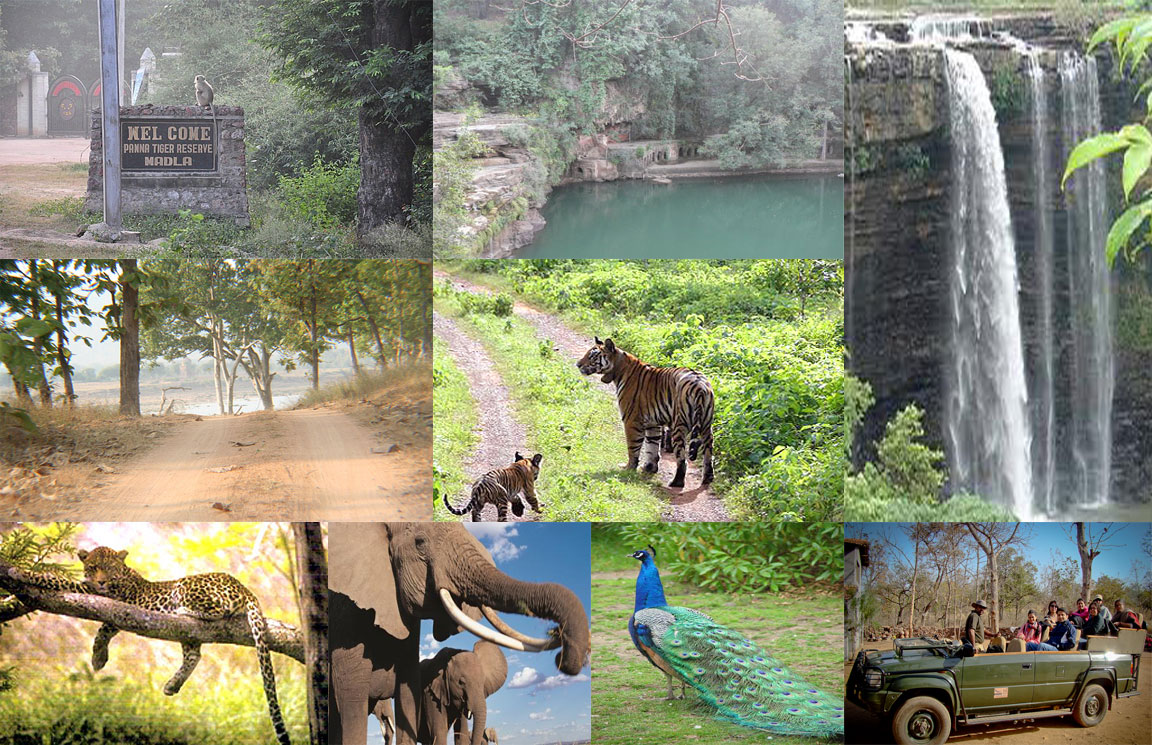Home ::Indian National Parks ::Panna National Park
Panna National Park
Panna National Park is a national park located in Panna and Chhatarpur districts of Madhya Pradesh in India. It has an area of 542.67 km2 (209.53 sq mi). It was declared in 1994 as the twenty second Tiger reserve of India and the fifth in Madhya Pradesh, Panna was given the Award of Excellence in 2007 as the best maintained national park of India by the Ministry of Tourism of India. It is notable that by 2009, the entire tiger population had been eliminated by poaching with the collusion of forest department officials. Panna National Park and the surrounding territorial forest area of North and South Panna forest division is the only large chunk of wildlife habitat remaining in North Madhya Pradesh in the otherwise fragmented forest landscape of the region.

The National Park is situated at a point where the continuity of the Tropical and subtropical dry broadleaf forests belt, which starts from Cape Comorin in South India, is broken and beyond this the Upper Gangetic Plains moist deciduous forests of the great Indo-Gangetic Plain begins. This area is the northern most tip of the natural teak forests and the eastern most tip of the natural 'Kardhai' Anogeissus pendula forests.
The forests of Panna National Park along with Ken Gharial Wildlife Sanctuary and adjoining territorial divisions form a significant part of the catchment area of the 406 km (252 mi) Ken River which runs northeast for about 72 km (45 mi) through the park. Terrain in Panna National Park is undulating and heavily forested with many streams and waterfalls.

Among the animals found here are the tiger, chital, chinkara, sambhar and sloth bear. The park is home to more than 200 species of birds including the Bar-headed Goose, Honey Buzzard, King Vulture and Blossom-headed Parakeet.
Panna National Park was declared as one of the Tiger reserves of India in 1994/95 and placed under the protection of Project Tiger. The decline of tiger population in Panna has been reported several times. Two female tigers were relocated there from Bandhavgarh National Park and Kanha National Park in March 2009. However, the last male tiger had already disappeared. A committee to look into the disappearance of the tigers was formed.
In June 2009, it was officially announced that the Reserve, which had over 40 tigers six years ago, has no tiger left and only two tigresses, which were brought in a while age In February 2012, three years after the entire tiger population of the reserve was eliminated, the Madhya Pradesh government had not determined responsibility for the debacle, nor had it passed the inquiry to the Central Bureau of Investigation in spite of requests from the Ministry of Environment and Forests and the Prime Minister's Office.
The Ministry of Environment and Forests (MoEF) approved a proposal to translocate two tigers and two tigresses to the reserve. One female each from Bandhavgarh National Park (coded T1) and Kanha National Park (T2) were translocated to Panna Tiger Reserve. A tiger male, coded T3, was brought from Pench Tiger Reserve but strayed out of the park shortly thereafter, in November 2009 The tiger started walking towards its home in Pench National Park, indicating homing instinct. It moved steadily through human dominated landscape without causing any conflict. Forest department staff tracked it continuously for over a month and finally brought it back to the Panna Tiger Reserve. It then settled well, established territory and started mating. The tigress, T1, translocated from Bandhavgarh National Park, gave birth to four cubs in April 2010 of which 2 survive till date. The second tigress, T2, translocated from Kanha National Park gave birth to four cubs several months later and all four survive till date. A third tigress, coded T4, an orphaned cub was reintroduced to Panna in March 2011. She learnt hunting skills with the help of the male and mated with him. Her sister T5 was released in Panna in November 2011. Both have settled well. Thus five tigers and around 10 cubs of up to 2 years are settled in Panna Tiger Reserve at present and their progress is being regularly monitored by the Forest Department.



